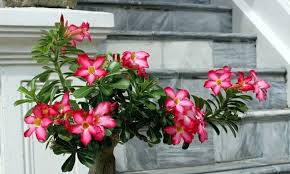**The Impact of Porcelain Flowers on Local Economies**

Porcelain flowers, scientifically known as Hoyas, not only grace gardens and homes with their beauty but also contribute significantly to local economies in various regions around the world. From cultivation and production to retail sales and tourism, porcelain flowers play a vital role in supporting livelihoods, generating income, and driving economic growth at the local level. In this article, we explore the multifaceted impact of porcelain flowers on local economies, highlighting their importance as a source of income, employment, and cultural heritage.
**1. Cultivation and Production:**
Porcelain flowers are cultivated and produced in a wide range of regions, from tropical rainforests to temperate climates, where they thrive in diverse environmental conditions. In areas where porcelain flowers are native or well-suited to cultivation, local farmers and horticulturists often cultivate them as cash crops, either for domestic consumption or for export to international markets. The cultivation of porcelain flowers provides employment opportunities for local communities, including farmers, gardeners, and agricultural workers, who are involved in planting, tending, and harvesting the flowers.
**2. Employment Opportunities:**
The porcelain flower industry creates employment opportunities across various sectors, including agriculture, horticulture, manufacturing, and retail. In regions where porcelain flowers are cultivated, harvested, or processed, local residents find employment in nurseries, farms, and production facilities, where they work as laborers, technicians, or skilled artisans. Additionally, the retail and hospitality sectors benefit from the sale of porcelain flowers, with florists, garden centers, and tourist establishments creating jobs for salespersons, designers, and hospitality staff.
**3. Value Chain and Supply Chain:**
The porcelain flower industry encompasses a complex value chain and supply chain that involves multiple stakeholders, including growers, wholesalers, retailers, exporters, and consumers. Local economies benefit from the creation of value-added products and services at each stage of the supply chain, from the cultivation and processing of porcelain flowers to the sale of finished products such as potted plants, floral arrangements, and decorative items. Small and medium-sized enterprises (SMEs) play a significant role in the porcelain flower value chain, contributing to local economic development and diversification.
**4. Tourism and Cultural Heritage:**
Porcelain flowers also contribute to local economies through tourism and cultural heritage activities, attracting visitors from near and far to explore gardens, nurseries, and botanical attractions where these flowers are showcased. In regions known for their porcelain flower cultivation or production, tourist establishments, such as botanical gardens, arboretums, and heritage sites, offer guided tours, educational programs, and cultural events centered around these iconic blooms. Tourism-related businesses, including hotels, restaurants, and souvenir shops, benefit from increased visitor traffic and spending, supporting local economic growth and development.
**5. Community Development and Social Impact:**
Beyond economic contributions, porcelain flowers also have a positive impact on community development and social well-being in local areas. The cultivation and production of porcelain flowers create opportunities for skills development, knowledge transfer, and entrepreneurship among local residents, empowering communities to harness their natural resources and cultural heritage for sustainable development. Additionally, the presence of porcelain flower gardens and cultural attractions fosters a sense of pride, identity, and community cohesion, strengthening social ties and promoting cultural exchange.
**Conclusion:**
In conclusion, porcelain flowers play a vital role in supporting local economies, providing income, employment, and cultural enrichment to communities around the world. From cultivation and production to retail sales and tourism, porcelain flowers contribute to economic growth, livelihoods, and community development in diverse regions. As we celebrate the beauty and significance of porcelain flowers, we recognize their importance as not only botanical treasures but also as engines of local economic prosperity and social well-being. By nurturing and preserving the porcelain flower industry, we can ensure its continued contribution to local economies and cultural heritage for generations to come.

